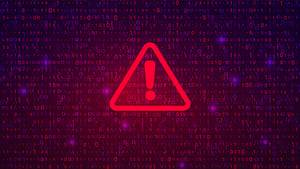3 Biggest Technology Threats Facing Healthcare
Healthcare organizations collect a vast amount of sensitive patient data including, medical records, billing and insurance information, and personal identification information.. And at least a portion of each patient record is shared across multiple entities, like hospitals, physicians’ offices, government agencies, insurers, and pharmacies. 
Collecting and storing this data is critical to patient care and fosters better communication between care providers. However, with cybercrime on the rise, healthcare organizations are constantly at risk of becoming the next breach victim.
In fact, hospitals account for nearly one-third of all large data breaches, according to data shared by TechJury, and by the end of this year, experts estimate security breaches could cost a whopping $6 trillion for healthcare companies.
To remain vigilant, here are three of the biggest tech threats facing healthcare today.
Employee Negligence
Lack of employee awareness and insufficient training is a significant threat to your patients’ information. Accidentally sharing a patient’s sensitive data directly violates HIPAA compliance and could cost your organization dearly.
Beyond that, there’s the chance shared information could land in the wrong hands. For example, sensitive personal data that’s shared or intercepted could end up being bought and sold on the dark web, causing a lifetime of challenges for your patient.
Taking the time to educate all employees on the importance of secure patient data input and retrieval, reviewing security policies, and holding regular retraining sessions to review new risks will help support your security measures. Remember, no matter how digitally savvy your organization, people still make mistakes.
Ransomware
Ransomware has become significantly more prolific in recent years and busy medical facilities make for a prime target.
It pays to have a keen awareness of your technology inventory, the tools you rely on to transmit sensitive information, and who has access to this data. It’s also essential to educate all team members on phishing schemes and social engineering tactics and keep up to date with best practices for avoiding them. (For example, never opening email attachments from unfamiliar senders, and never sharing sensitive data via email.)
Be sure everyone in your facility is well-trained on how to spot and report suspicious activity. After all, cybercriminals will manipulate whomever necessary to get what they need — from non-medical professionals, like members of your janitorial staff, to senior executives. And they’ve become even more sophisticated in those efforts.
Implanted and IoT Medical Devices
Connected healthcare makes many aspects of treatment much more efficient, especially in light of the COVID-19 pandemic. Implanted medical devices, such as insulin pumps and pacemakers, are vulnerable to hackers, and the outcome can be devastating, according to CI Security. The sheer volume and range of platforms present a challenge, one that currently has no real solution.
Unfortunately, at this point, there’s little that the device can do to block a malicious attack but it’s still a good idea to stay aware of this threat and any updates.
The healthcare sector can be slow to advance when it comes to technology. while some organizations have adopted more cutting-edge tools and processes, there’s still a tech skills gap to consider. By staying aware of top threats and keeping your team informed, you can help stave off attacks and keep your patients’ data well-protected.




